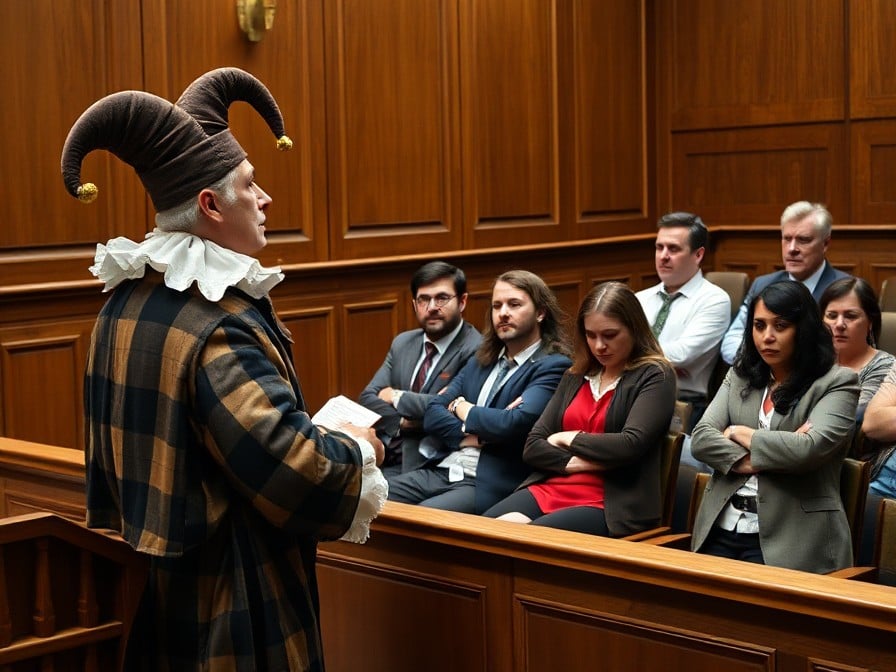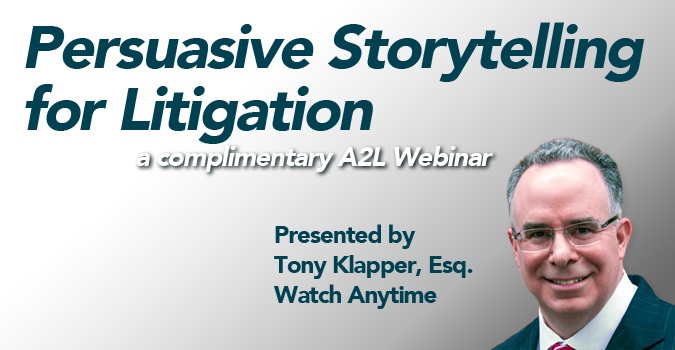I've written extensively about what you should do when using storytelling techniques in the courtroom to persuade. I've even released a free book and free webinar on the topic. But I don't think I've ever really talked about the mistakes one can make—most of which I've seen (from opponents).
Legal storytelling is both an art and a technique that can be incredibly effective. However, it's easy to make mistakes that can undermine your narrative. This blog will walk you through twelve common legal storytelling pitfalls and how to avoid them.
1. Neglecting a Clear Structure
A strong structure is the backbone of compelling legal storytelling. Without it, your legal narrative can become confusing and aimless. Ensure your story has a clear beginning, middle, and end that hopefully includes a good guy, overcoming some huge hurdle, and a clear bad guy. A well-structured narrative guides your audience through the complexities of the case, breaking it down into digestible parts. This segmentation also aids in highlighting key points and building a logical argument. It's the difference between a tangled maze of information and a clear, scenic route that leads to persuasion. Structure not only makes your story consumable but also reinforces its persuasive power.
2. Overloading with Jargon
Legal jargon can detach your audience from your story. Simplifying complex terms is essential for maintaining clarity and accessibility for your audience. While using technical language to demonstrate expertise is tempting, it often alienates the very people you're attempting to persuade. Legal storytelling is about connection, and that connection is built on understanding. When judges and jurors can easily comprehend the narrative, they are more inclined to trust the storyteller and the message being delivered.
3. Forgetting the Audience
Understanding your audience is vital. Tailor your language, examples, and tone to resonate with those you're addressing, ensuring your story holds their attention. Knowing your audience includes recognizing their values, beliefs, and what piques their interest. It transforms your legal storytelling from a one-size-fits-all approach to a personalized engagement, making your argument more compelling.
4. Ignoring Emotional Elements
Legal storytelling isn't just about facts. Emotion is a powerful tool to connect with your audience, making your story memorable and impactful. Emotional elements draw the audience into the story, evoking empathy and engagement that mere data could never achieve. The narrative becomes more than just a sequence of events; it becomes a shared journey. However, balancing emotion with fact is key. Overly sentimental approaches can distract from the argument, while neglecting emotion can render your story lifeless and forgettable.
5. Overlooking Characters
Characters drive the narrative. Developing relatable and dynamic characters helps to engage your audience and give purpose to your story. Characters are the vessel through which your audience experiences the narrative, providing a face and voice to abstract issues. By personifying elements of your story, you can transform dry facts into engaging, relatable content that captivates the listener.
6. Focusing Solely on Winning
While winning is the end goal, overemphasizing it can detract from the storytelling process. Prioritize crafting a compelling story over merely outmaneuvering the opposition. When all focus is placed on winning, the integrity and authenticity of a legal narrative can suffer, potentially alienating listeners and losing credibility.
7. Failing to Create Tension
Tension and suspense are key components of any captivating story. Without these elements, your audience may lose interest. Tension keeps the audience on the edge of their seats, prompting them to stay engaged and invested in the narrative's unfolding. This anticipation can lead to deeper involvement with the story's conclusion.
8. Being Too Predictable
A predictable narrative loses its impact. Introduce twists and unexpected turns to keep your audience engaged and invested in the outcome. When a story is too predictable, it fails to capture the imagination or hold attention. The surprise elements in a narrative serve as stimuli, rekindling interest and keeping the audience attentive.
9. Lacking a Compelling Opening
An engaging opening captures interest from the beginning. A strong hook is essential to draw your audience and set the tone for your narrative. The opening sets the stage for what follows, instantly establishing expectations and capturing attention. A compelling introduction can be the difference between an attentive audience and one that's easily distracted.
10. Neglecting Visual Elements
Visuals can complement your story. Use litigation graphics to enhance understanding and create a more vivid picture in your audience's mind. Visual aids like diagrams, charts, or storyboard-like sequences make data more accessible and complicated topics understandable. They serve as visual anchors that can aid retention of information and clarify complex ideas.
11. Failing to Tie Up Loose Ends
Leave no questions unanswered. Ensure your story resolves all its plot points to maintain credibility and closure. Unresolved elements can give the impression of incompleteness, affecting the credibility of your argument and leaving your audience dissatisfied.
12. Underestimating Revision
Revising is key to honing your narrative. Regularly review your story to eliminate inconsistencies, tighten the plot, and refine your delivery. Revision is not just about correction but evolution — evolving your narrative to its most persuasive form. Revisiting your story with fresh eyes is imperative, ensuring each element serves its purpose and contributes to the overarching narrative.
Other articles about legal storytelling, narrative, and courtroom persuasion:
- 21 Secrets From an Opening Statement Guru
- Three Top Trial Lawyers Tell Us Why Storytelling Is So Important
- The Paradox of Persuasion: Why Logic Often Falls Flat and What Actually Works
- How Often Are Cases Decided on Facts vs. Emotion? The Critical Role of Jury Consultants
- $300 Million of Litigation Consulting and Storytelling Validation
- Storytelling at Trial - Will Your Story Be Used?
- Dan Pink, Pixar, and Storytelling for the Courtroom
- Folktales Reveal a Powerful Persuasion Tool for Trial Lawyers
- The Value of Storytelling: A Current Case in Point
- Storytelling Proven to be Scientifically More Persuasive
- Portray Your Client As a Hero in 17 Easy Storytelling Steps
- 5 Essential Elements of Storytelling and Persuasion
- Litigation, Opening Statements, and Pixar's 22 Rules of Storytelling
- Ten Ways to Maximize Persuasive Courtroom Storytelling (Part One)







Leave a Comment